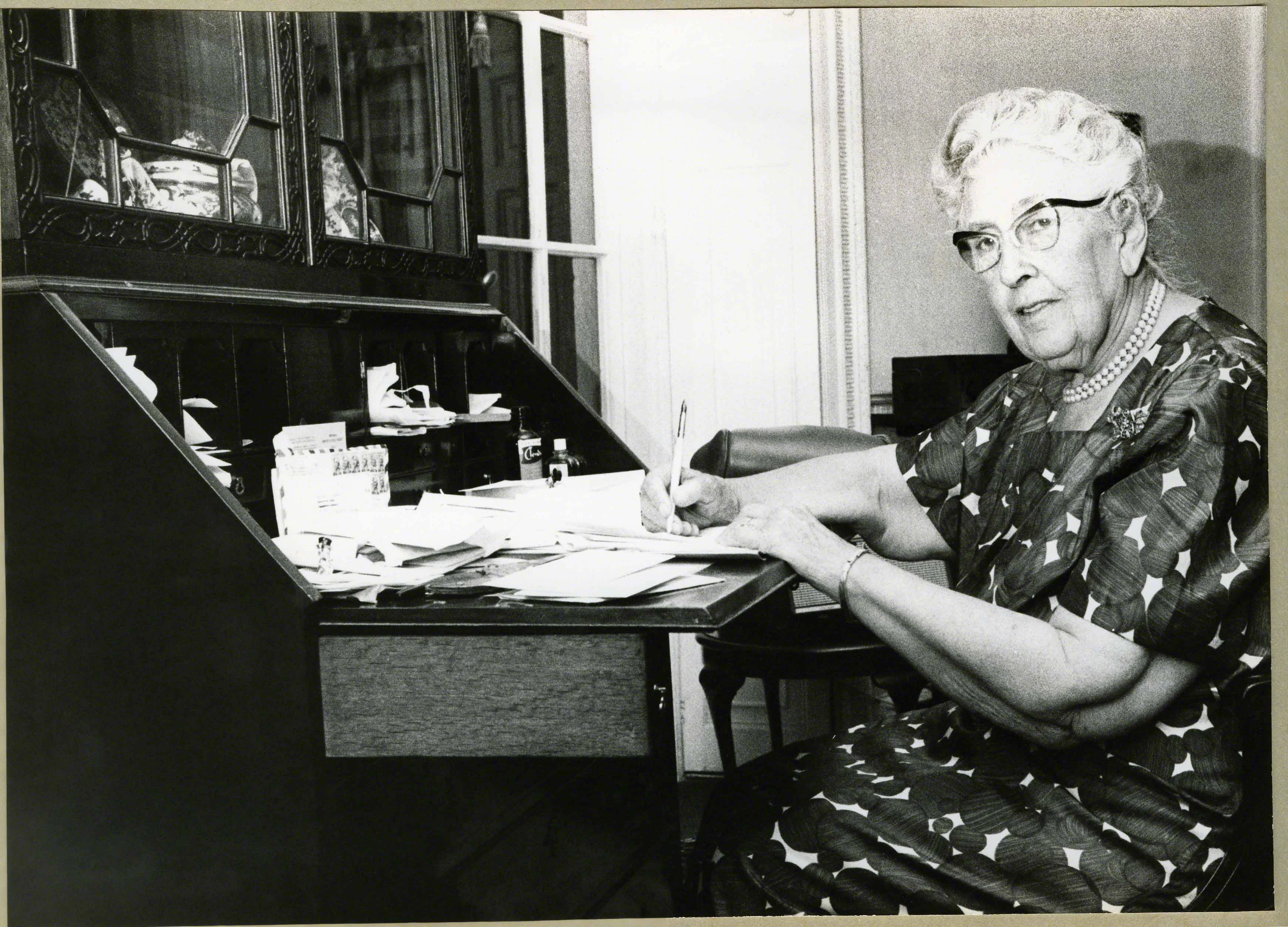Agatha Christie: the Welsh Connection
, 21 June 2017
Our new exhibition, “Agatha Christie: A Life in Photographs,” shows rarely-seen photographs, letters and personal belongings from the most widely published author of all time. But did you know that the Queen of Crime had strong connections to Wales?
Agatha’s only child, Rosalind, married a Welsh man called Hubert Prichard. They lived at a house called Pwllywrach, just outside the village of Colwinston, Vale of Glamorgan. Their son Mathew was brought up there. As a doting grandmother, Agatha visited regularly to see her daughter and only grandchild and became very fond of Wales. There is a family photograph album in the exhibition with a picture of Agatha at Pwllywrach. There’s also an album showing the press cuttings about her daughter’s marriage in the show.
Wales also featured in Agatha’s writing. In 1967, she published “Endless Night” – a story set on a road outside Cardiff and inspired by a local legend. A first edition and a notebook of her ideas for the story are both in the exhibition, as well as her typewriter.
The exhibition has been kindly supported by the Colwinston Trust, named after the village where Agatha’s daughter lived. Established in 1995, the Trust distributes grants to UK Registered Charities working in the areas of opera, music and the visual arts. Funding is primarily directed towards the support of activity that benefits Wales. The Trust’s main income is royalties from the London production of “The Mousetrap,” the murder mystery written by Agatha Christie.
Agatha Christie: A Life in Photgraphs, is on display until 3 September 2017 and admission is free.



Comments - (1)
I went to a Welsh friend of my husband's daughter's wedding last summer. It was a beautiful ceremony, very avante garde. I have planned a Welsh menu, a Welsh shaped bunny, Welsh bread and St. Clement's cake and another Welsh veggie dish, for some neighbours and their little children. I, after some effort, unearthed a piece of writing about the Welsh countryside from Philip Boast's Watersmeet. I shall include a few excerpts: Watersmeet hung breathless in the brilliant glare - Where Shelley and Wordworth had written poetry, a green shimmer of hanging woods tumbled sheer from the red rocks into a haze of wild flowers - Beyond the dense green cleft of Watersmeet curving down towards the jagged hogsback coastline, the Severn Sea stretched far out to the white cliffs of Wales. Clara said a million ships a year risked these turbulent waters, where the tides were the highest in the world and flowed on to the Devon cliffs faster than a man could run; But once it was a desert, instead of the sea a huge desert of red sand, a mighty continent, rose away to the north, and when it began to rain 400 million years ago, the floods washed the sand down and that's where the Devon rock comes from.
Since I am originally Indian but have been Canadian from Aug 2002, I take delight in the fact that the author refers to imported rhodendrons. Most certainly from Canada, I presume.
I must read Dylan Thomas and re-read Philip Boast. I am glad that Wales does not pale into significance when spoken in the same breath as England, Ireland and Scotland.
Thank you,
Gayathri B. Seetharam